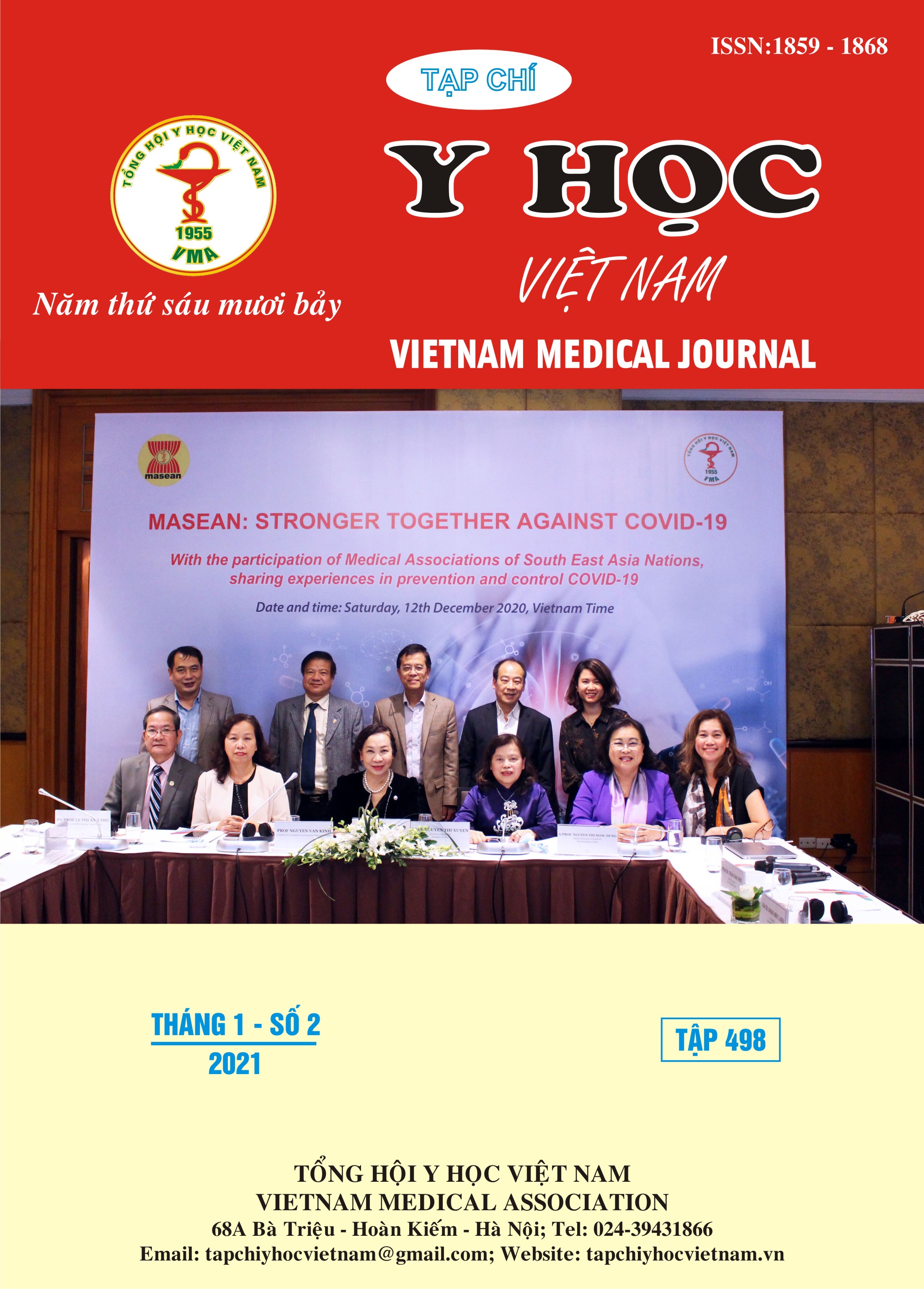DISORDERS OF ELECTROLYTES, CALCIUM, MAGNESIUM AND PHOSPHORUS IN ALCOHOLIC CIRRHOSIS PATIENTS
Main Article Content
Abstract
Background: Alcoholic liver disease includes alcoholic steatosis, alcoholic hepatitis, and alcoholic cirrhosis, in order of increasing severity. There are many complications of advanced alcoholic liver disease, one of those is disorders of metabolism. Aim: to describe the prevalence and association of electrolytes, mineral metabolism disorder with some factors in alcoholic cirrhosis patients. Methods: The study was performed on 66 patients with alcoholic cirrhosis (65 male, 1 female; mean aged 55.98 ± 11.25 years). 6 patients belonged to Child A, while 30 were in Child B and 30 in Child C. Patient’s blood samples were collected, tested and results recorded. Results: Hyponatremia was found in 62.1% of patients (min, max: 118-141 mmol/L). Rate of hypokalemia: 30.3%, hyperkalemia: 9.1% (min, max 1.8-5.8 mmol/L). Hypochloremia was 39.4%, hyperchloremia: 16.7%, min, max (75-114). Hypocalcemia was highly prevalent (75.8%), min, max (1.34-2.54). There was a high incidence of hypomagnesemia (68.2%), min, max (0.33-1.09). Hypophosphatemia was 22.7%, hyperphosphatemia was 4.5%, min, max (0.40-2.01). Among electrolytes, mineral, K+ (Child A: 4.4 ± 0.8, Child B: 4.1 ± 0.8, Child C: 3.4 ± 0.7; p = 0.002) and total Ca++ (Child A: 2.2 ± 0.1, Child B: 2.1 ± 0.2, Child C: 1.9 ± 0.1; p = 0.01) decreased follow with the decompensated degree of cirrhosis, other substances change without statistical significance. Serum potassium mean in no kidney failure was 3.6 ± 0.7, increased when kidney failure 4.2 ± 1.1, p < 0.05, other substances change without statistical significance. Serum calcium mean was 2.13 ± 0.20, decreased to 2.01 ± 0.18 when ascites, p < 0.05, other substances change without statistical significance. Conclusion: Prevalence of decreasing electrolytes and minerals is most common in the order of Ca, Mg, Na, Cl, K, Pho. Hypokalemia, hypocalcemia is relationship with cirrhosis degree, potassium increase when kidney failure, calcium decreased when ascites.
Article Details
Keywords
Alcoholic liver disease, electrolytes disorder, mineral metabolism disorder
References
2. Rossi R.E., Conte D, Massironi S. (2015). Diagnosis and treatment of nutritional deficiencies in alcoholic liver disease: Overview of available evidence and open issues. Science Direct, 47(10): 819-825.
3. George J. (2006). Mineral metabolism in dimethylnitrosamine-induced hepatic fibrosis. Clinical Biochemistry, 39(2006): 984–991.
4. George J, Ganesh H.K, Acharya S, et al. (2009). Bone mineral density and disorders of mineral metabolism in chronic liver disease. World J Gastroenterol., 15(28): 3516–3522.
5. Jaurigue M.M, Cappell M.S. (2014). Therapy for alcoholic liver disease. World J Gastroenterol., 20(9): 2143-58.
6. Mann R.E, Smart R.G, Govoni R. (2003). The Epidemiology of Alcoholic Liver Disease. Alcohol Research & Health., 27(3): 209-219.
7. Schafer A.L, Shoback D.M. (2016). Hypocalcemia: Diagnosis and Treatment. South Dartmouth (MA): MDText.com, Inc. 2000-.
8. Chiba T, Okimura Y, Inatome T, et al. (1987). Hypocalcemic crisis in alcoholic fatty liver: transient hypoparathyroidism due to magnesium deficiency. Am J Gastroenterol., 82(10):1084-7.


